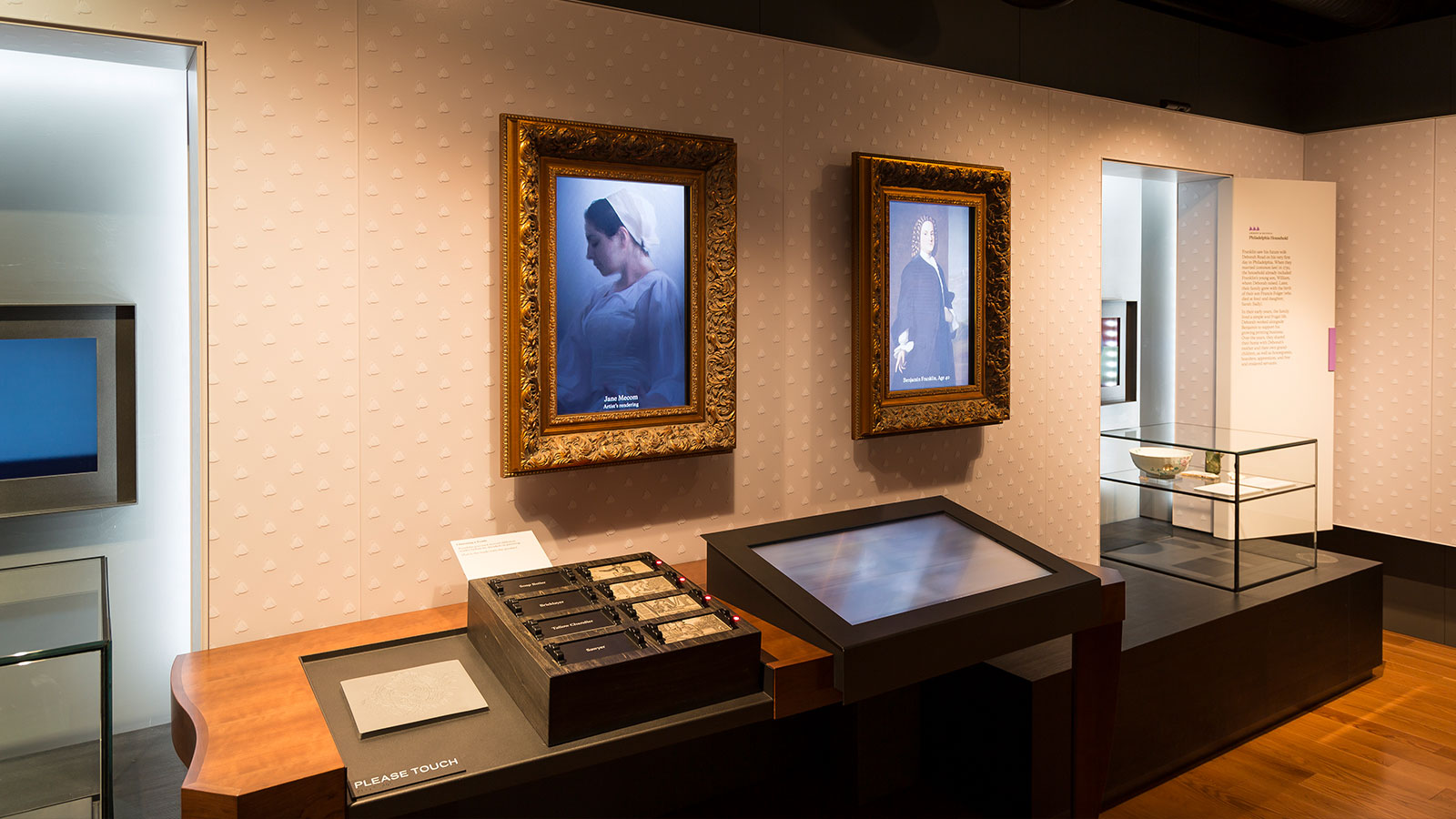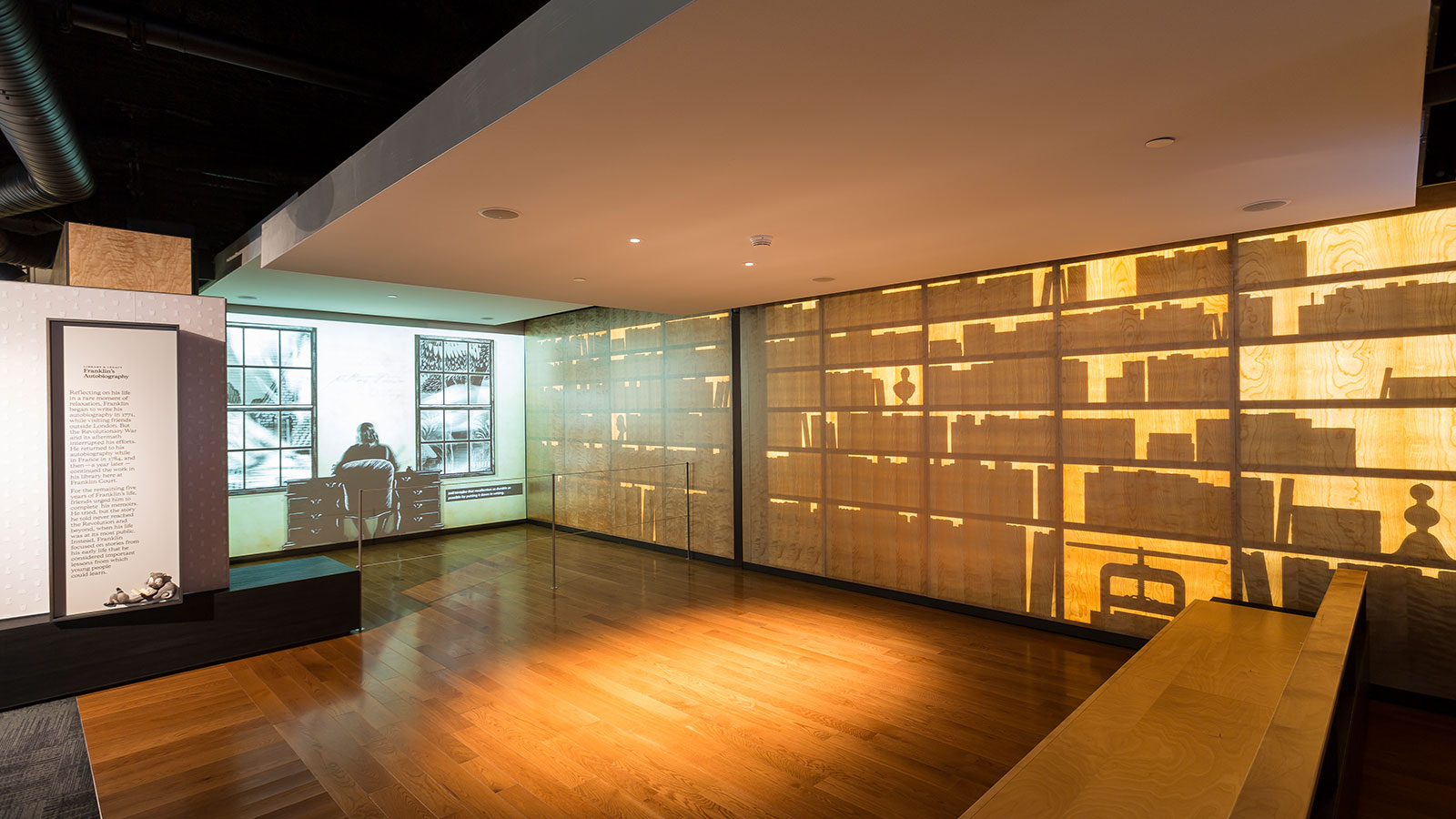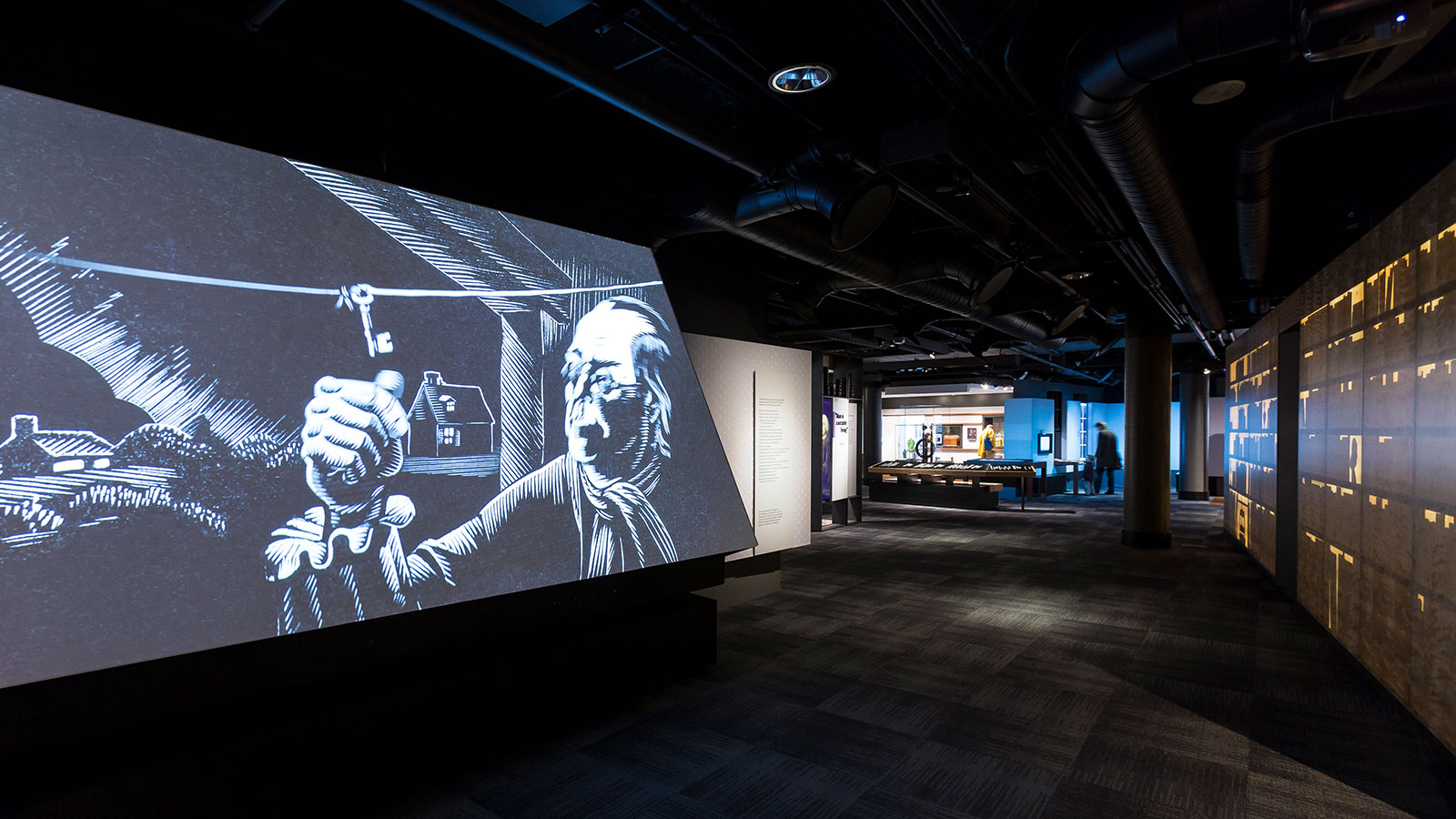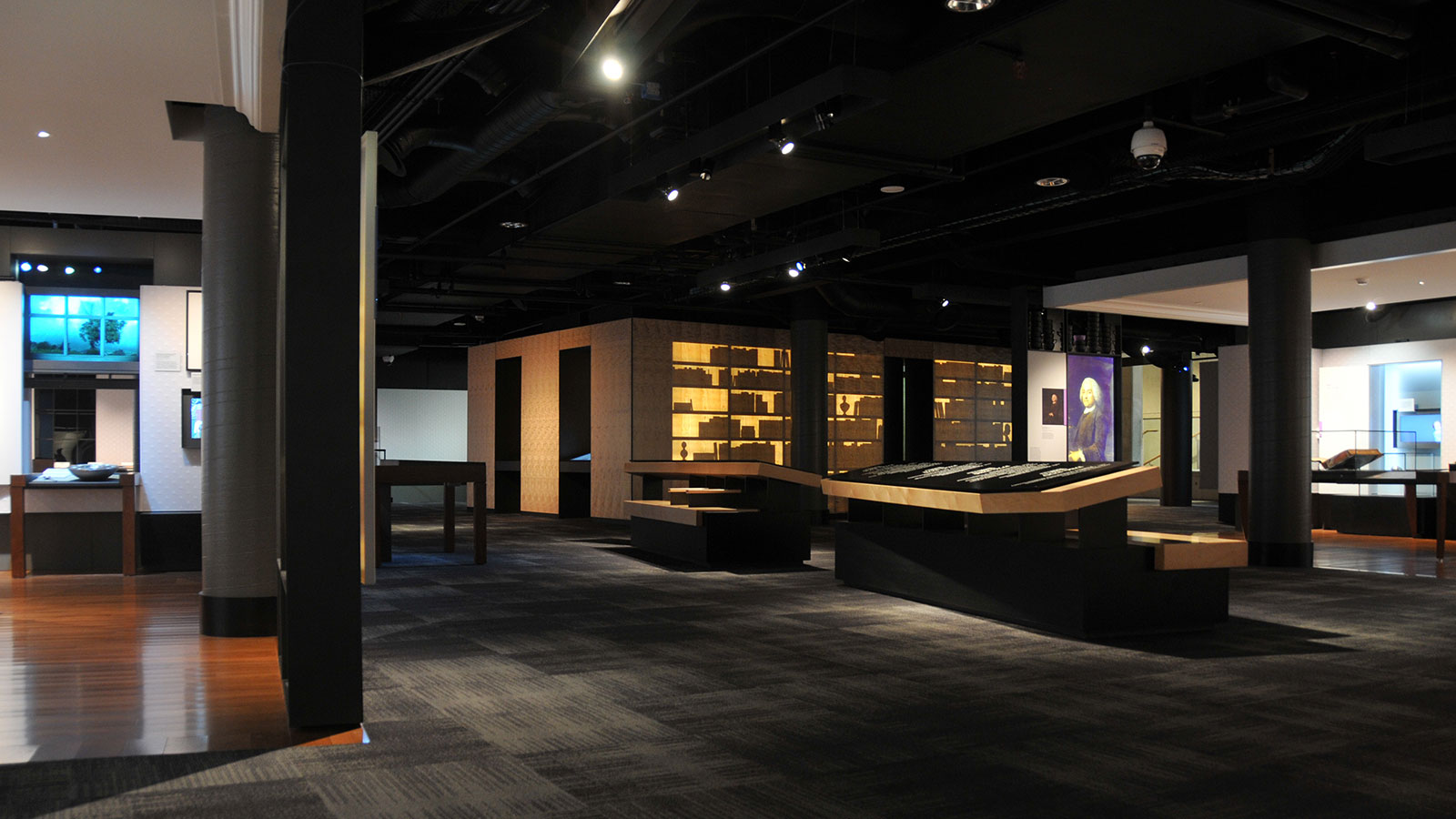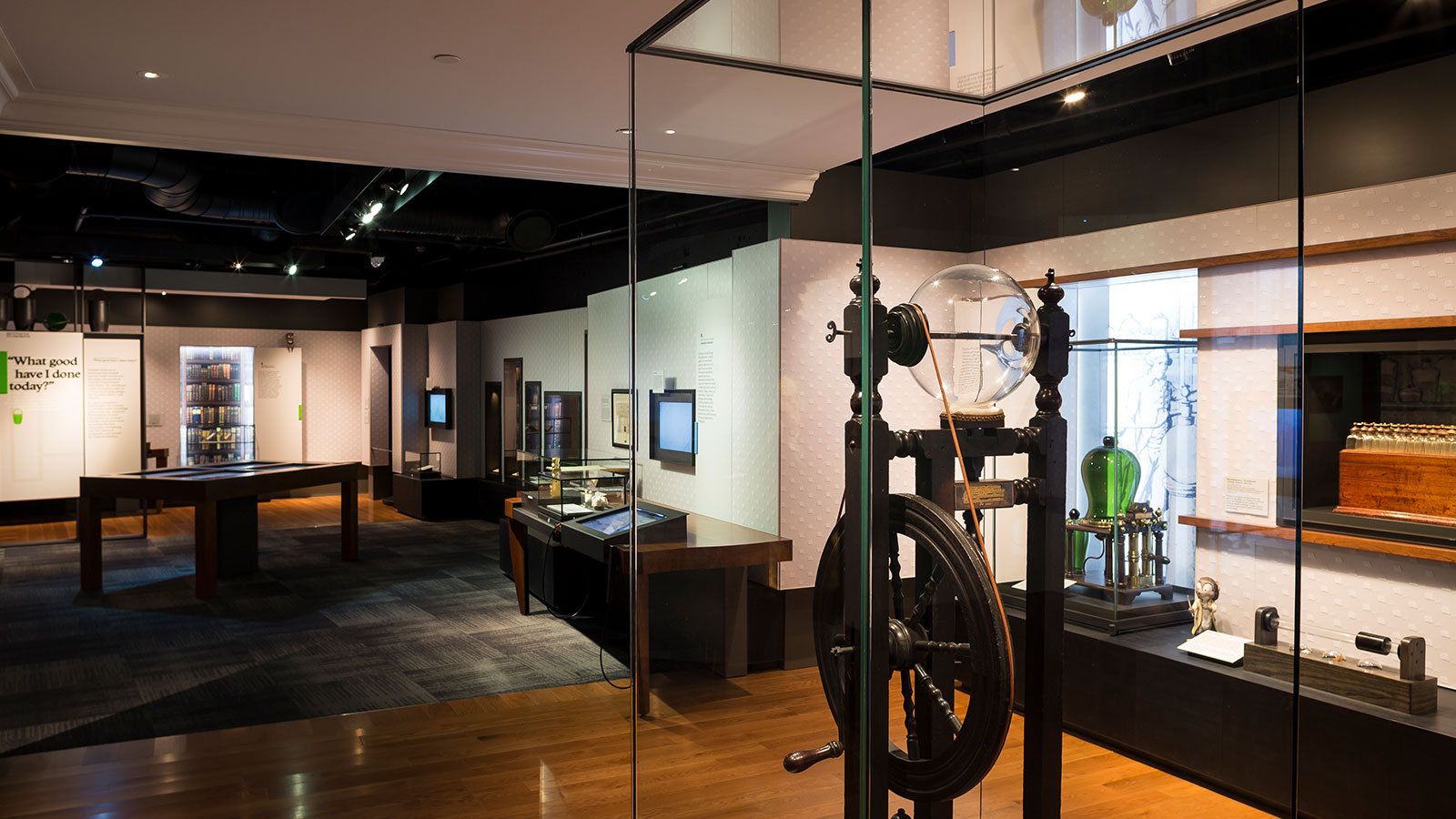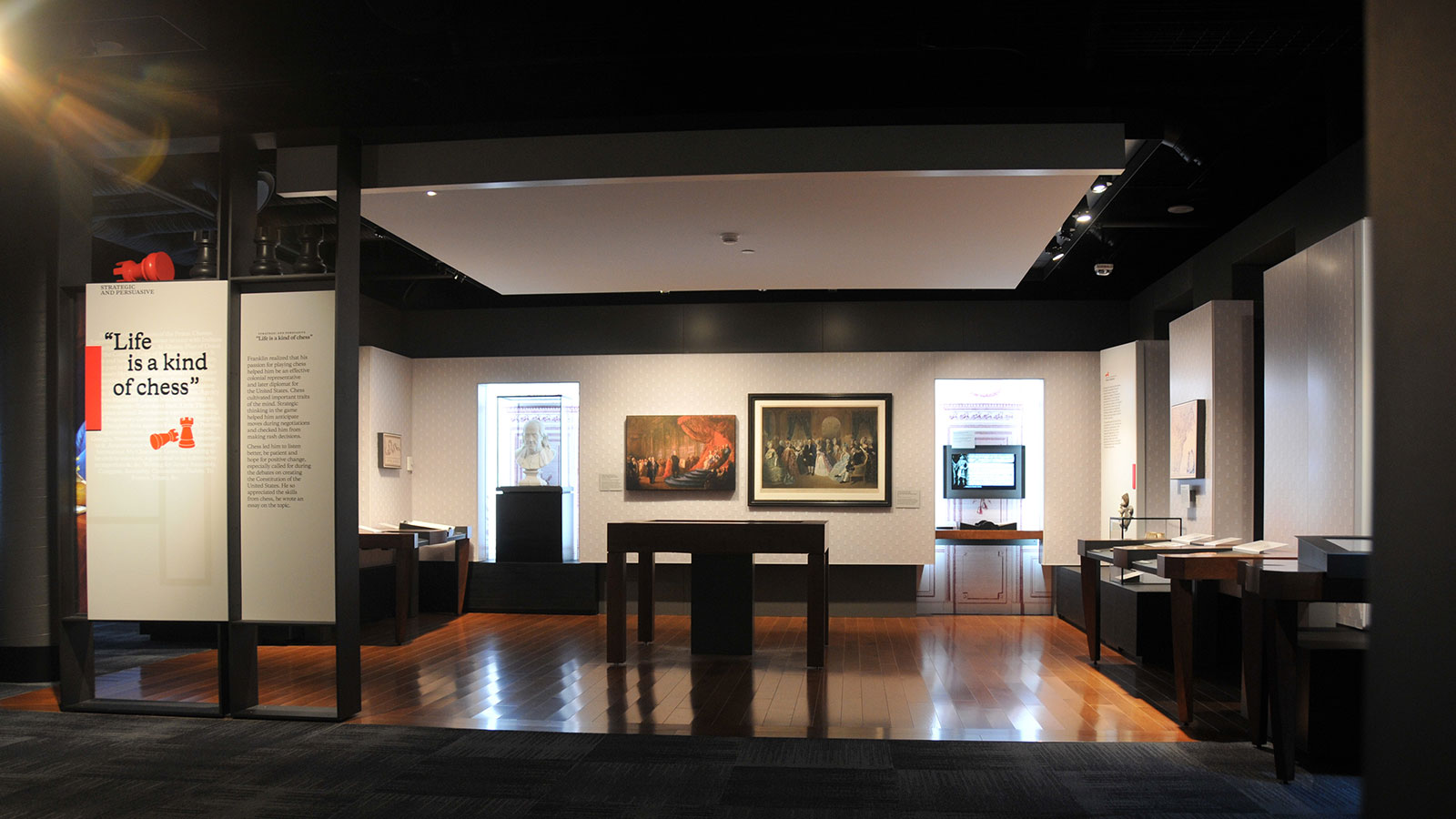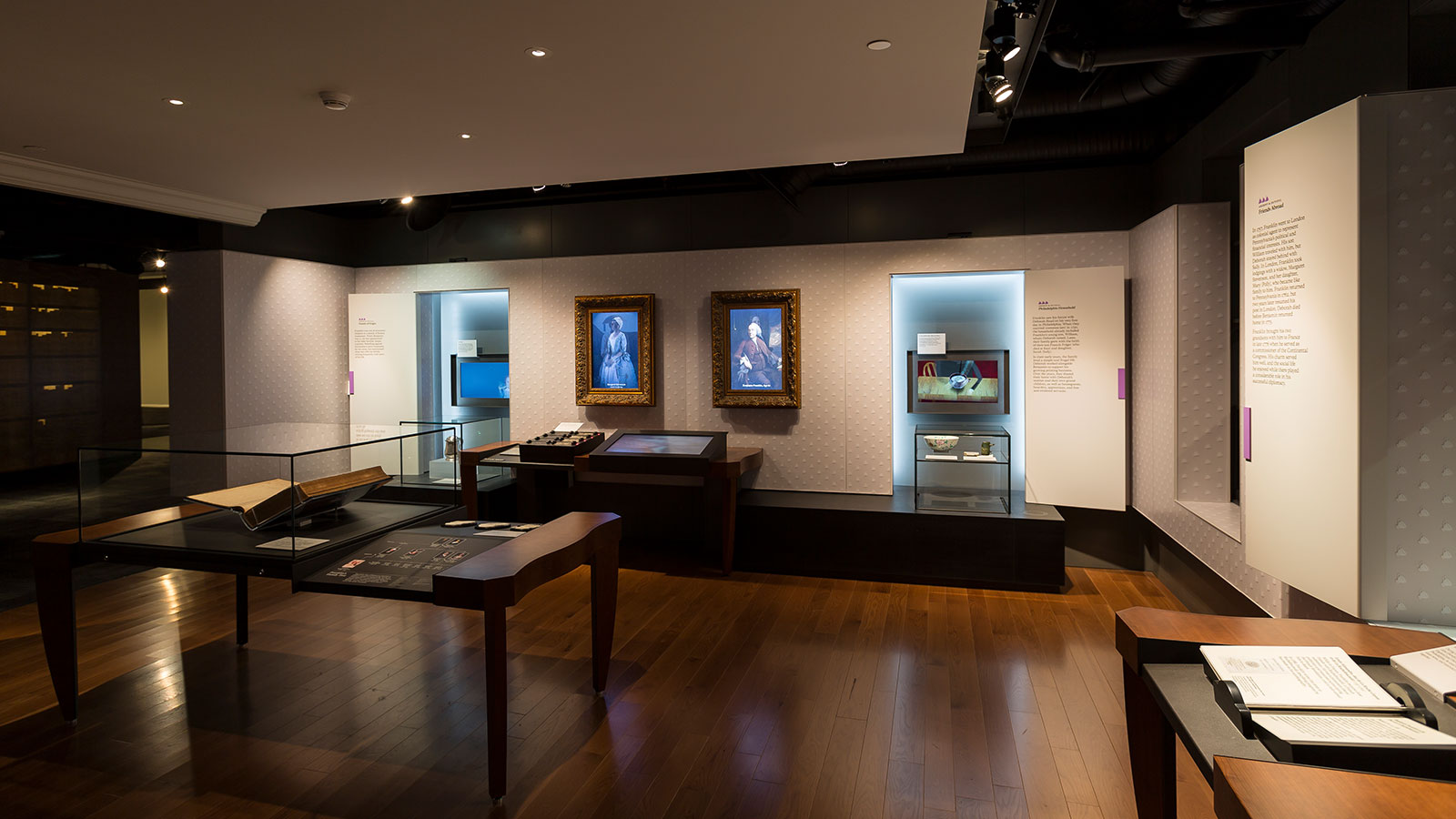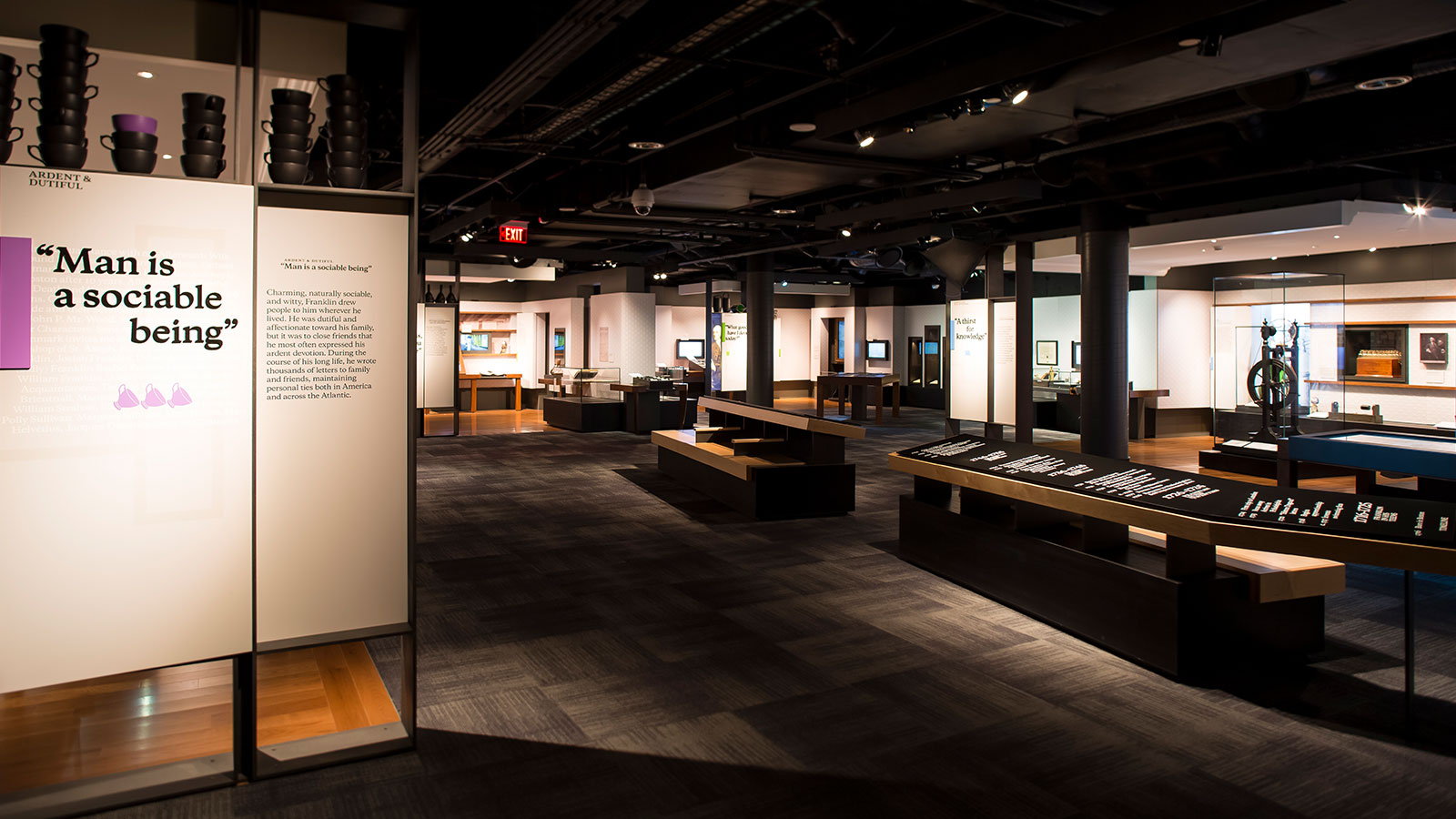Benjamin Franklin Museum
Philadelphia, Pennsylvania
Size: 9,500 square feet
Designers: Casson Mann Designers
Building “Ben” Again
Located adjacent to his vanished house and print shop, the Benjamin Franklin Museum opened in the fall of 2013 on the site of the former Franklin Court. The original museum, The Franklin Court Museum, was completed by kubik maltbie three decades earlier. The new museum, operated by the National Park Service, resides underground on a historic site that houses the archeological remains of Franklin’s 18th century home and printing shop. The exhibit features personal artifacts, computer animations, and interactive displays that explore the life of Franklin as a private citizen and statesmen. Visitors are encouraged to examine artifacts and engage with hands-on displays located throughout the museum.
Each room in the museum is unique and reflects a different aspect of Franklin’s life, personality, or character trait. Unlike the chronological approach of the past exhibit that forced visitors through a pre-determined path, the redesigned space features an open floor plan that allows visitors to flow easily from one exhibit to another. This encourages visitors to explore the museum at their own pace, encouraging an individualized visitor experience. Children are especially encouraged to self-guide their visits discovering the many new audio-visual components and other interactive exhibits throughout.
Rising to an Underground Challenge
To overcome the challenges of seamlessly incorporating the new museum into the original underground location, kubik maltbie worked closely with the general contractor, Daniel J. Keating Co., Casson Mann Designers, Quinn Evans Architects, and a team of historians and curators, to fabricate and install all of the exhibits and conservation casework. Using the same electrical and lighting subcontractors as the building construction team, and providing engineering support for custom building elements, kubik maltbie ensured that the building and exhibits were consistent and compatibly integrated.
kubik maltbie was also responsible for the complex audio visual and hardware integrations integral to delivering on the project objectives of ensuring the information within the museum is more relevant, engaging, and accessible to modern, younger audiences.

